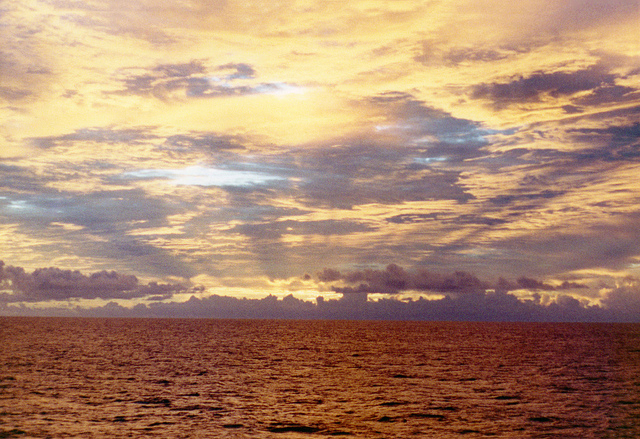More than 190 nations have converged in Paris for the United Nations conference on climate change, or the 21st Conference of Parties (COP21). Their goal is to arrest global warming below 3.6 degrees Fahrenheit (2 degrees Celsius) through a legally binding and universal agreement. Scientists posit that temperature is a critical component of the climate change equation because as global temperatures increase, glacial run-off and the thermal expansion of the globe’s watery surfaces will result in 3 feet of sea-level rise by the end of the century.
Experts such as David Caron and Clive Schofield have assessed the dire implications of rising seas on maritime boundaries. This will be especially problematic in the South China Sea because of its unique seasonal weather patterns, currents, and numerous low-lying features.
All of the South China Sea claimants are on hand in Paris for the deliberations, and even if they disagree about their maritime boundaries, they all acknowledge the reality of climate change-induced sea level rise and should be aware of its effects in the South China Sea. For instance, even if China proceeds with fortifying the features on which it has sought to strengthen its claims via land reclamation (or terriclaiming), these projects will not be immune from the corrosive environment of the South China Sea due to predicted sea level rise. The same is true for the other claimants’ outposts in the South China Sea, as well as the danger to their coastlines. With such a commonly held threat, perhaps climate change cooperation on sea level rise could serve as a confidence building measure (CBM) between the parties?
Adaptation Strategies as a CBM
Cooperatively developing adaptation strategies for climate change, specifically sea level rise, would be an excellent cooperative CBM approach for the South China Sea claimants. Even though adaptation can be incredibly complex phenomena because of the diversity of interpretations and executions of different nations, adaptation strategies remain predominantly non-proprietary and low-tech. They can range from flood-resistant farming techniques to seawall construction to shared legal frameworks.
Each country has taken on various adaptions plans in anticipation of sea level rise. But differences exist and one size does not necessarily fit all. This is why working cooperatively, while simultaneously building trust and confidence would benefit the claimants. For example, seawall construction may be too expensive or technical for some South China Sea nations to undertake independently, but may be completely within the capacity of others, like Singapore, in cooperation with partners or under the auspices of a larger grouping like ASEAN. A brief comparison between Singapore and Vietnam highlights this prospect.
Singapore’s minister for the environment and water resources, Vivian Balakrishnan, has publicly supported sea level rise adaptation initiatives to protect the vulnerable 227-square-mile island nation. As one of the countries in the region most endangered by sea level rise, Singapore’s government has taken substantive steps including commissioning cost-benefit analyses of seawall protection. The researchers involved concluded that protection with an elaborate seawall network was the lowest-cost strategy for the city-state and that Singapore would capitalize fully on its long-term construction and maintenance costs. Tapping into Singapore’s experience with this kind of physical infrastructure construction would also benefit other claimants’ adaptation initiatives, including protecting Vietnam’s major coastal cities.
Vietnam’s Ministry of Natural Resources and Environment, under the leadership of Pham Khoi Nguyen, concluded in 2009 that average temperature in Vietnam is expected to increase about 4.1 degrees Fahrenheit and sea level is expected to rise by up to 2.5 feet. This will threaten Vietnam’s 897-mile-long coastline which includes the massive Mekong River Basin in the south and the smaller Red River Basin in the north. Both of these areas are already prone to flooding, but increasing temperatures combined with sea level rise would exacerbate this dramatically. Vietnam has already worked with the Netherlands on flood-resistant farming techniques that could be readily disseminated to other claimants, such as Malaysia and the Philippines.
ASEAN as a Climate Change Leader?
ASEAN would at first appear to be the best forum for addressing regional cooperation on sea level rise. Four of the South China Sea claimants are members: Brunei, Malaysia, the Philippines, and Vietnam. But despite significant opportunity, ASEAN has had a difficult time building momentum or consensus to challenge sea level rise. The United Nation’s Intergovernmental Panel on Climate Change emphasized this point when it noted that for ASEAN, “effective governance and institutions for facilitating adaptation planning and implementation across multiple sectors within regions was by far the dominant opportunity and constraint.”
Other regional experiences, such as in the Lower Mekong Basin (LMB), do not augur well for future adaptation efforts under ASEAN’s leadership. Despite the fact that adaptation plans at the national level have been formulated in all four Lower Mekong countries—Cambodia, Laos, Thailand, and Vietnam—and years have been devoted to the issue, the United Nations has concluded that “transboundary adaptation planning across the LMB does not exist to date.”
If four ASEAN members are unable to cooperate on climate change adaption strategies in a relatively benign environment such as the LMB, then getting all claimants to coordinate in the highly-contested South China Sea, especially under the aegis of ASEAN, seems unlikely. However, individual ASEAN members working together and with outside states have produced fruitful multilateral endeavors, such as the Coral Triangle Initiative on Coral Reefs, Fisheries, and Food Security which focuses on coastal and marine bio-resources. A similar approach could be worth pursuing in the South China. The opportunity exists, and with all the claimants already represented in Paris, the time is right.
